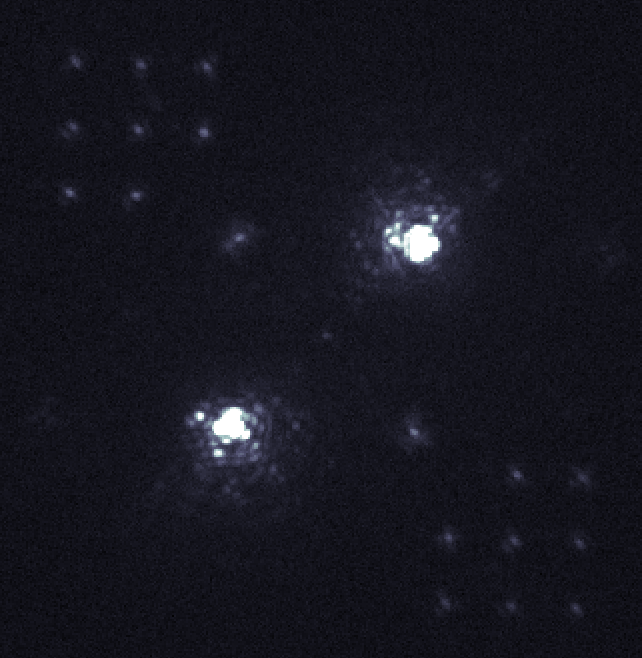“Can we stop calling it Nth light?”
Dr. Jared Robert Males
Tonight marked MagAO-X’s return to doing AO on starlight rather than an internal calibration source. The Observatory kindly allowed us to remain in place on the platform, so our return to operations was as simple as turning off the lamp and closing the loop on the first bright star we tried.
…
I’m lying to you, of course. The calibration that had worked so well on night #2 didn’t look nearly as nice when we booted up the system this evening. Alex and Laird had to open up the instrument to make fine adjustments to our pupil image positions. New response matrices had to be taken as well. “But I didn’t change any of this code!” was uttered many times, by many people.
Then we closed loop on a bright star. And it went great. We imaged π Pup and its companion. We even were able to hold on to an Airy ring around the companion! All this, in 1 arcsecond and above seeing (a far cry from Las Campanas Observatory’s trademark 0.5″).
We took the opportunity to record the AO instrument builder’s favorite video: the “now you see it, now you don’t” video.
Of course, capturing this video involved some pretty advanced optics:
Kyle and I drove the twin MagAO-X science cameras tonight. We took some data on pi Pup in various filters for Strehl ratio measurement, measuring the foci in various filters with Maggie’s focus script.

We put in our narrowband and continuum methane filters, which will eventually allow us to perform simultaneous differential imaging of exoplanets and detect methane absorption—something we see in planets closer to home, namely Jupiter. For this, however, they were just the narrowband filter available in the instrument best suited to the below-average seeing. (Shorter wavelengths are harder to correct, and our H-α filter would not have looked too good in the conditions we had.)
Next we looked at a close (0.144″) binary, HIP 38160. This wasn’t intended to be a challenging target in terms of contrast, but we were heartened to see it in the dark hole formed by our vAPP.

We also took an on-sky response matrix. This calibration step provides a mapping between our system’s deformable mirror commands and the resulting signal on our wavefront sensor.
We got some good data tonight, learned a bit more about how the system behaves, and have big plans for tomorrow night. (Of course, we also need to move off the platform immediately following that night, and off the mountain shortly after that. Fortunately for Dr. Males and the limits of good taste in blog titles, we’re not getting past “fourth light” this run.)
Today’s MagAO-X Song of the Day: